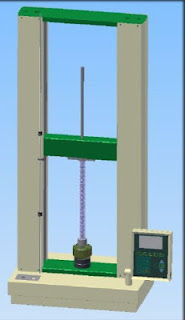Testing Long Compression Springs

Testing long compression springs comes with many challenges, the most severe of which is the tendency of the spring to buckle under compression forces. Tinius Olsen engineers developed a solution to ensure accurate and reliable test results, by using a support post fitted to the lower compression platen. This support post centers the spring and provides support during the initial stages of compressive loading, when buckling is most likely to occur. The load cell is mounted on the machine base and the support post passes through the cross-head as it compresses the spring, preventing and buckling of the spring. T his configuration can be easily applied with a standard U series Tinius Olsen machine. For more information on Compression/Tension testing machines, click here

